LLE AR111 15W 12V 3000K 40deg
Posted by Marcel van der Steen in Led lights, Light measurements Add commentsA nice 12 V lightbulb based on leds, from Led Light Europe. 5 high power leds are used in a strong metal case, with screw connections at the backside for 12 V AC or DC. This lightbulb gives a nice bundle of light, and it is of wharm wite color.
See this overview for a comparison with other lamps.
Summary Measurement Results
| parameter | meas result | remark |
|---|---|---|
| Color Temperature | 2800 K | Warm white. |
| Luminous Intensity Iv | 700 Cd | This is a bright lightbulb. |
| Beam Angle | 40 deg | Common beam angle, the same as with a halogen spot. |
| Power P | 12.5 W | . |
| Power Factor | 0.74 | For every 1 kWh net power consumed, there has been 0.9 kVAhr for reactive power. |
| Luminous Flux | 429 lm | A lot of light. |
| Efficacy | 34 lm/W | . |
| CRI_Ra | 83 | Color Rendering Index. |
| Coordinates chromaticity diagram | x=0.445 and y=0.395 | |
| Fitting | 12V | |
| Diameter | 110 mm | Outside diamtere, 102 is the diameter at the front, just before the biggest diameter, see also this picture. |
| Length | 57 mm | Measured from the front of the lamp until the ultimate point of the 12 V clamps. |
| General remarks | The ambient temperature during the whole set of measurements was about 25.5 deg C.
Heat up effect: not mentionable. Voltage dependency: power and illuminance are dependent from the lamp voltage. For all raw measurement data follow this link (lle_ar111_15w_12v_3000k_40deg.zip). The lightbulb has a nice and strong metal case, see also this photo. |
E_v at 1 meter distance, or I_v
Herewith the plot of the average Luminous Intensity (I_v) dependent from the inclination angle with the lamp. Average here means that all Luminous Intensities measured with different turn angles but the same inclination angle, are averaged.
The radiation pattern of the lamp.
This radiation pattern shows a beam of light with a common width (40 degrees). Note that this graph shows the average of all light measurements done on the lamp (all turn angles averaged).
The luminous intensity dependent from the inclination angle, now with all turn angle measurements included.
A nice graph, showing a steady decrease of the luminous intensity with an increasing inclination angle. The measurements per inclination angle (with a different turn angle) are near to each other, meaning no matter what the turn angle, the intensity is about the same.
When taking the averages values, it becomes clear that at 20 deg the intensity is at 50 % of its value at 0 degrees. The beam angle of the light from this lamp is then 40 degrees.
The plot at the top of this paragraph shows the averaged luminous intensity values per inclination angle, which is used to compute the total luminous flux.
Luminous Flux
With the luminous intensity data as a function of the inclination angle, it is possible to compute the luminous flux.
The result of such computation for this lamp is a luminous flux of 429 lm.
Efficacy
The luminous flux being 429 lm, and the power of the lamp being 12.5 W, yields a luminous efficacy of 429 / 12.5 [lm/W] = 34 lm/W.
A power factor of 0.74 means that for every 1 kWh net power consumed, a reactive component of 0.9 kVAr was needed.
| Lamp voltage | 12 V (AC or DC) |
| Lamp current | 1.4 A |
| Power P | 12.5 W |
| Apparent power S | 16.9 VA |
| Power factor | 0.74 |
Color Temperature and Spectral Power Distribution
The spectral power distribution of this lamp.
The measured color temperature is about 2800 K, equivalent to warm white light.
Chromaticity Diagram
The chromaticity space and the position of the lamp’s color coordinates in it.
The light coming from this lamp is fairly near the Planckian Locus (the black path in the graph). As it is not right on top of the locust itself, a correlated color temperature is computed (instead of a color temperature), which indicates to what black body radiator temperature this lamp’s light is comparable. The color temperature together with the CRI determine for what specific use this lamp is suited.
Its coordinates are x=0.445 and y=0.395.
Color Rendering Index (CRI) or also Ra
Herewith the image showing the CRI as well as how well different colors are represented. The higher the number, the better the resemblance with the color when a black body radiator would have been used (the sun, or an incandescent lamp).
Each color has an index Rx, and the first 8 indexes (R1 .. R8) are averaged to compute the Ra which is equivalent to the CRI.
CRI of the light of this lamp.
The value of 83 is higher than 80 which is considered a minimum value for indoor usage. This light bulb’s use is therefore suited for general indoor use, where the light of this lamp is capable of rendering colors about the same as a black body device at this light bulb’s correlated color temperature would render.
Note: the chromaticity difference is 0.004 which is higher than 0.0054, which means that the calculated CRI result is meaningful. This is because the chromaticity value of this lamp is close at the Planckian Locus.
Voltage dependency
The dependency of a number of lamp parameters on the lamp voltage is determined. For this, the lamp voltage has been varied and its effect on the following lamp parameters measured: illuminance E_v [lx], color temperature CT or correlated color temperature CCT [K], the lamppower P [W] and the luminous efficacy [lm/W].
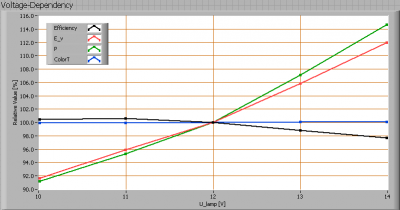
Lamp voltage dependencies of certain lamp parameters, where the value at 230 V is taken as 100 %.
The light bulb’s power and illuminance are dependent on the applied voltage. When a 20 % change in illuminance is remarked, it requires a change of at least 2 VC in applied voltage, which is unlikely to happen.
Warm up effects
After switch on of a cold lamp, the effect of heating up of the lamp is measured on illuminance E_v [lx], color temperature CT or correlated color temperature CCT [K], the lamppower P [W] and the luminous efficacy [lm/W].
Effect of heating up of the lamp on important lamp parameters.
The important parameters as illuminance and power do not show a remarkable dependency at warm up.
Topview led lamp
The 12 V screw tarminals and thecooling fins for the driver electronics.
OThe diameter of he border at the utmost front (102 mm) is somewhat smaller than the lamp’s widest diameter (110 mm).

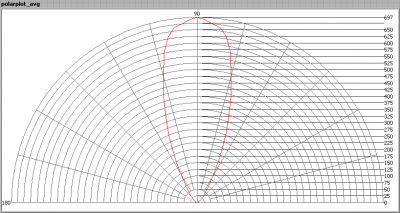
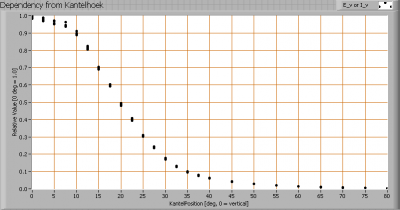
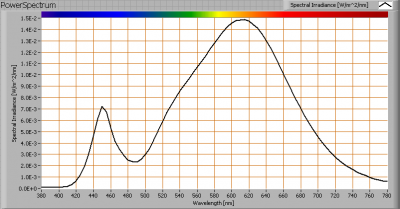
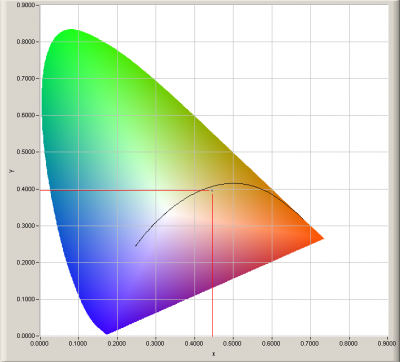
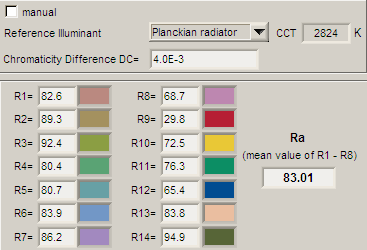

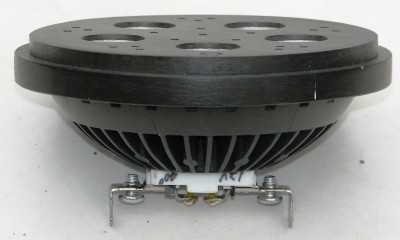



September 28th, 2008 at 9:44 pm
Hi Marcel: This is an excellent article. I really am impressed with the amount of data you extracted from this bulb. I finally get to see your studies in English. Thanks for taking the time to do it. I look forward to seeing more of your work.